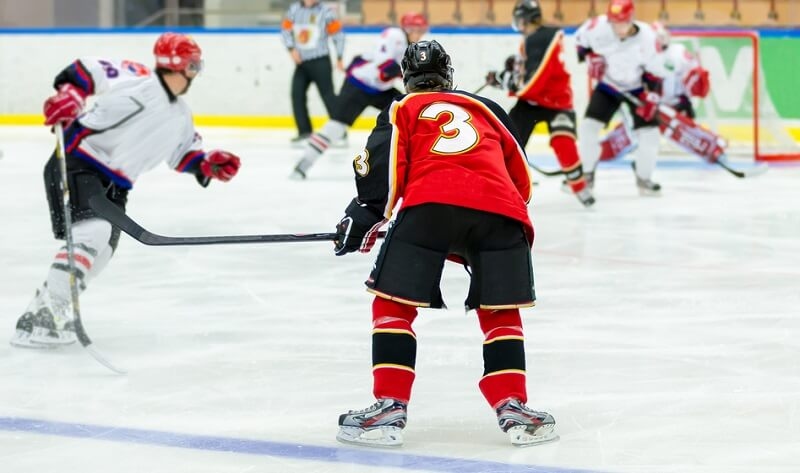
Close
In the fast-paced world of hockey, power plays provide teams with a golden opportunity to gain an advantage over their opponents. When executed effectively, these strategic man-advantage situations can turn the tide of a game and lead to crucial goals. While there is no one-size-fits-all formula for success, certain power play strategies have proven to be consistently effective. In this blog post, we will explore some time-tested power play tactics that have stood the test of time. Whether you're a player, coach, or passionate hockey fan, understanding these strategies can help you appreciate the intricacies of this thrilling aspect of the game.
The foundation of any successful power play begins with a strong formation. One commonly used form is the "umbrella" setup, where three players position themselves in a high triangle, while the remaining two players occupy the low areas in front of the net and along the boards. This formation allows for effective puck movement and creates passing options to open up shooting lanes, while also giving defensive domination.
Another popular formation is the "diamond" setup, with one player stationed at the point, two players down low on either side of the net, and one player in the high slot. This formation enables quick puck movement and opportunities for one-timers from the point or close-range shots.

One of the key elements of a successful power play is rapid and accurate puck movement. Moving the puck quickly forces the penalty killers to constantly adjust their positions, creating gaps and openings in their defensive coverage. Players should focus on crisp, tape-to-tape passes, utilizing their peripheral vision to anticipate plays and exploit weaknesses in the penalty-killing formation.
Effective puck movement is not limited to players on the ice; it also extends to the goaltender. The hockey goalie can serve as an additional passer, helping to maintain puck possession and keep the opposing penalty killers off balance.
Screens and deflections can be potent weapons in the power play. By positioning players in front of the net, the offensive team can obstruct the goalie's view and create chaos in the crease. This obstructed vision makes it challenging for the goalie to track the puck shot from the hockey stick and react quickly to shots.
Additionally, players can redirect shots or pass in front of the net to change the direction of the puck, making it even more challenging for the goalie to make a save. Timing, positioning, and the ability to read the play are critical in executing successful screens and deflections.
Shots on goal are crucial during power plays. The more shots a team can generate, the higher the likelihood of scoring. Players should look for shooting opportunities from high-percentage areas such as the slot or the faceoff circles. Hard, accurate shots not only increase the chances of scoring but also create rebounds that can lead to second-chance opportunities.
Players must also be ready to crash the net and pounce on loose pucks for rebounds. Positioning themselves near the crease and maintaining awareness of the puck's location are essential skills for capitalizing on rebounds and turning them into goals.

Effective communication and situational awareness are vital components of a successful power play. Players must communicate constantly to coordinate their movements, alerting teammates to potential passing options or defensive pressure. Clear and concise communication helps players make split-second decisions and exploit gaps in the penalty-killing unit.
Furthermore, maintaining situational awareness is crucial. Power plays can be fast-paced, and players must stay aware of their surroundings to anticipate the movements of their teammates and opponents. This awareness allows them to make quick decisions, identify open passing lanes, and seize scoring opportunities.
While having a structured power play formation is essential, teams must also be adaptable and creative. It's important to recognize that opponents will adjust their penalty-killing strategies to counter a team's power play tactics. Being able to adapt on the fly and find new ways to create scoring chances is crucial.
Players should be encouraged to think outside the box, make quick decisions, and take calculated risks. Unpredictability can catch the penalty killers off guard and lead to openings in their defense. Creative passing plays, unexpected shots from unconventional angles, and well-timed player movements can all contribute to the success of a power play.
Power plays require practice and chemistry among the players. Regularly dedicating practice time to power play scenarios allows teams to refine their strategies, improve their execution, and build cohesion among the players.
Developing chemistry among power play units is also essential. When players have a deep understanding of their teammates' tendencies, it becomes easier to anticipate their movements and make split-second decisions. This familiarity fosters seamless passing, quick decision-making, and efficient puck movement.
Power plays in hockey are dynamic and ever-evolving. While there is no foolproof formula for success, integrating these additional factors into power play strategies can enhance a team's performance. Effective communication, situational awareness, adaptability, creativity, and special teams chemistry all play pivotal roles in achieving power play success. By honing these skills, teams can gain a significant advantage on the ice, turning power plays into opportunities for game-changing goals. So, embrace the artistry of power plays, and appreciate the skill, teamwork, and strategy involved in executing these plays to perfection.
This content was created by AI